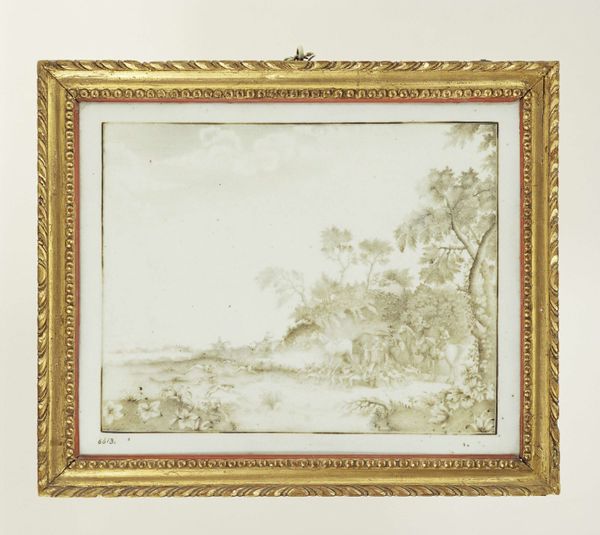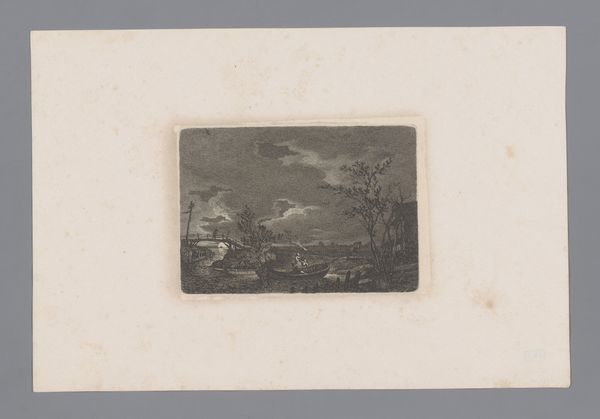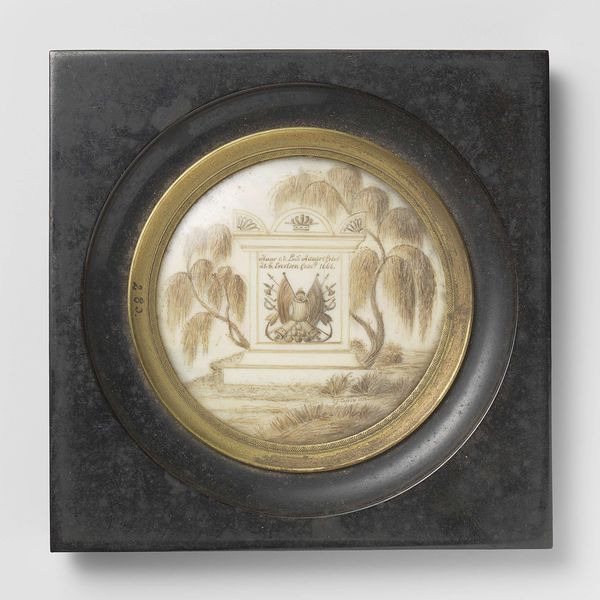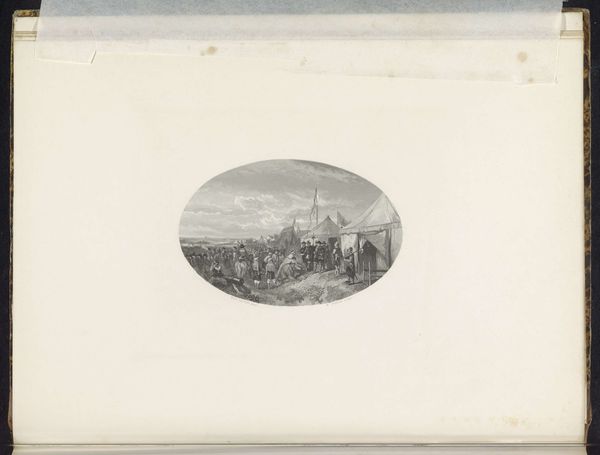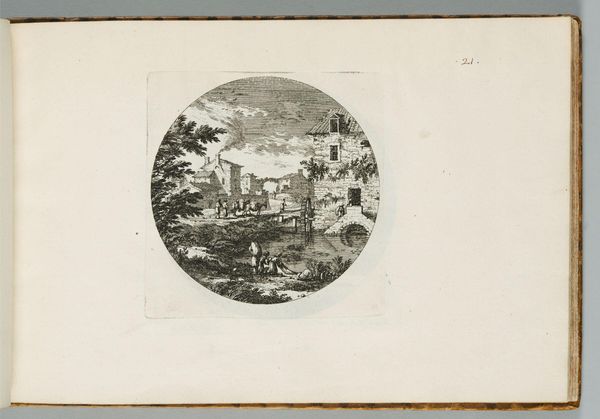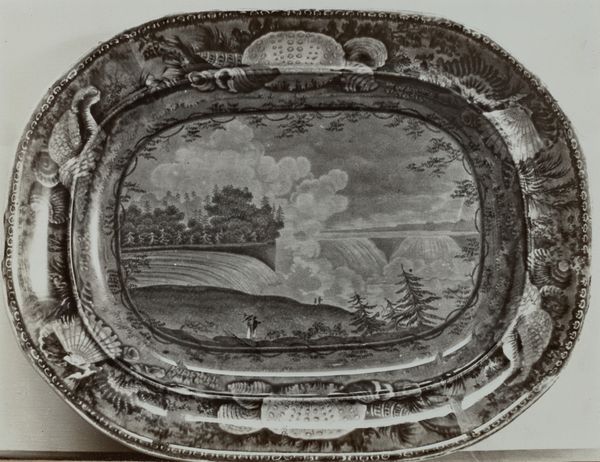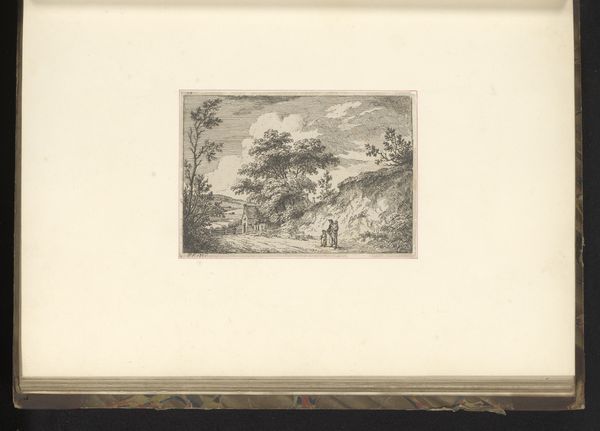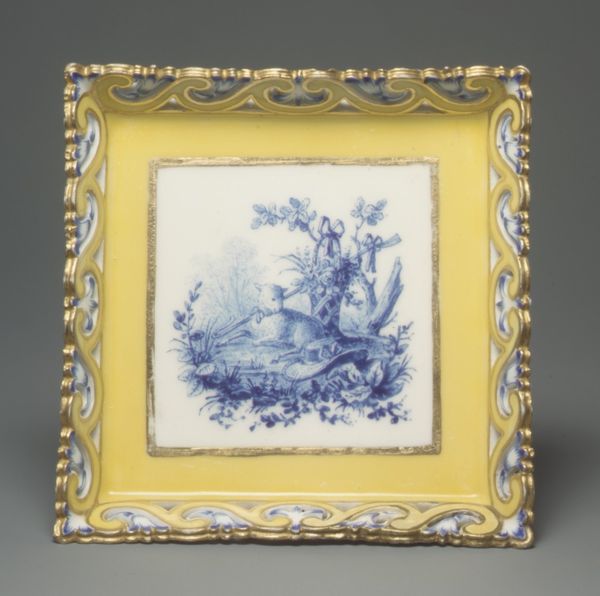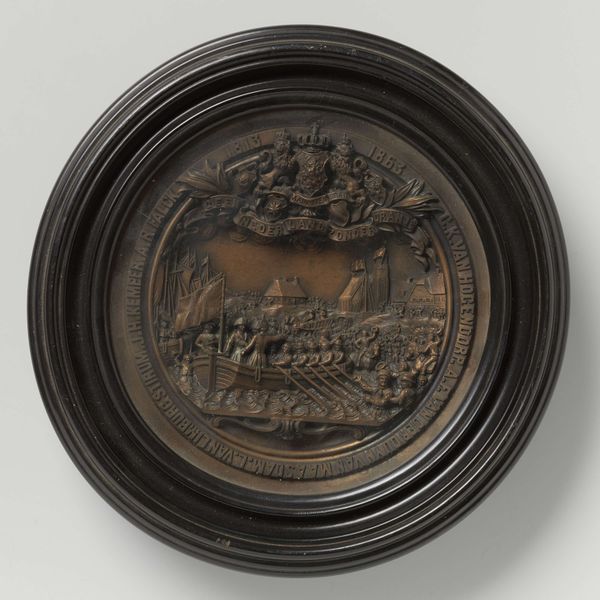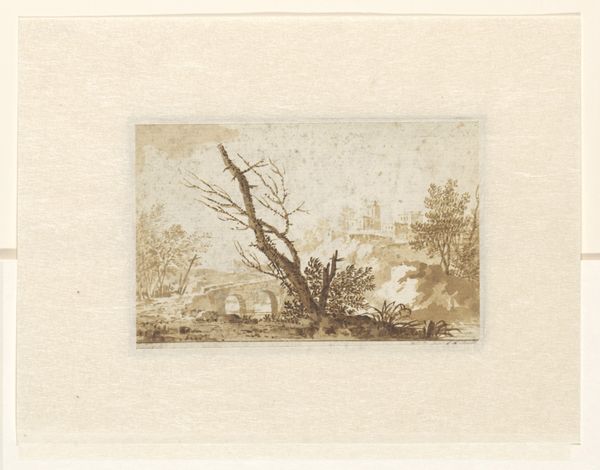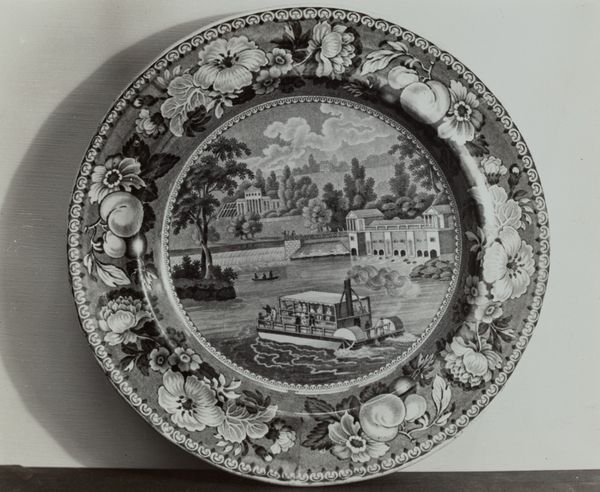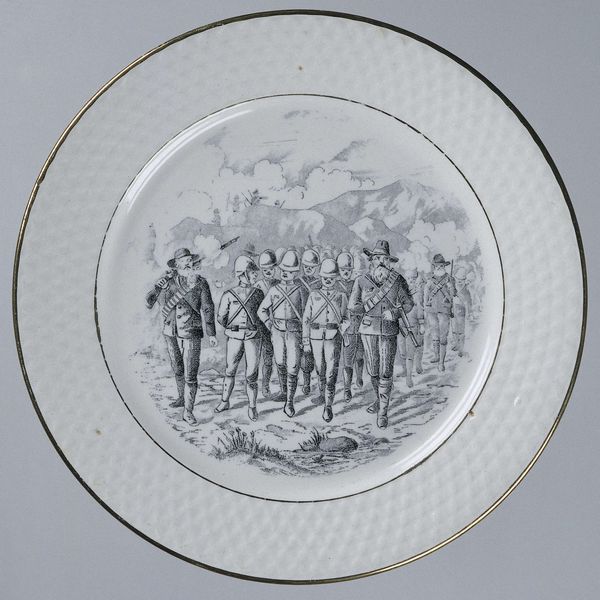
Gravure op parelmoer tonend het ruiterduel tussen burggraaf De Breauté en Gerard Abrahams 'Lekkerbeetje' op de Vughtse heide op 5 februari 1600 1628
0:00
0:00
print, etching, engraving
#
narrative-art
#
baroque
# print
#
etching
#
sculpture
#
landscape
#
framed image
#
history-painting
#
engraving
Dimensions: height 6.8 cm, width 9.2 cm, height 12 cm, width 17.3 cm
Copyright: Rijks Museum: Open Domain
Editor: This etching from 1628, by Jean Bellekin, depicts "The cavalry duel between Viscount De Breauté and Gerard Abrahams 'Lekkerbeetje'." It's incredibly detailed, like looking into a miniature, chaotic world frozen in time. How do you interpret this piece, especially considering its subject matter? Curator: It’s fascinating how Bellekin captures not just a historical event, but the psychological landscape of conflict. Notice the swirling composition – almost vortex-like. To me, it speaks of the instability and anxiety inherent in these clashes. Editor: I see that. The bodies are kind of piled on top of each other; are those visual cues for deeper cultural memory? Curator: Precisely! Remember, prints like this were vehicles for transmitting ideologies and narratives. Consider the symbolic weight of a duel – beyond mere combat, it was a test of honor, of divinely ordained justice, or at least it claimed to be. Who would have acquired this and what purpose did it serve in their homes? Editor: I hadn't thought of it as a political statement. It just seemed like a snapshot of one moment. Curator: But what is that moment *meant* to represent? Consider the long shadow of such events; prints helped solidify heroes and villains in the public imagination, shaping perceptions of power and legacy. And of course, prints allowed widespread accessibility, far beyond the elite who may have commissioned grander paintings. Editor: So the seemingly simple act of etching a battle scene carries a lot more cultural and historical weight than I initially assumed. Curator: Absolutely. The symbols embedded within are not just aesthetic choices, they are actively shaping collective memory and influencing the viewer’s understanding of this historic clash, centuries after the fact. Editor: I’ll never look at historical prints the same way again.
Comments
No comments
Be the first to comment and join the conversation on the ultimate creative platform.
